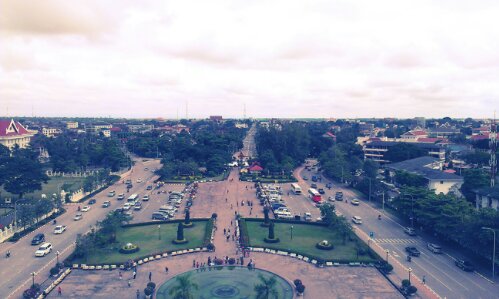Toes can be an interesting focal point for photos. Toemail is a site that collects just that – check them out here toemail.wordpress.com.
Category Archives: Laos
Nong Khiaw
Took off to Nong Khiaw, which is a village about 3 hours ride from Luang Prabang. Although not as scenic as the route from Xieng Khouang to Luang Prabang, the occasional view of rivers intertwined deep amongst jagged peaks still yields awe.
There really isn’t much to do in Nong Khiaw, except take a slow walk, loiter on the bridge to admire the dramatic ridges huddled around the river Ou, enjoy a slowly-but-homely-prepared meal and chatting with other travellers. And by the time lunch was done, it was almost time for dinner. And too late to walk to the nearest cave and back before dark. Not much to do after night fall. Taking things slow. And easy.
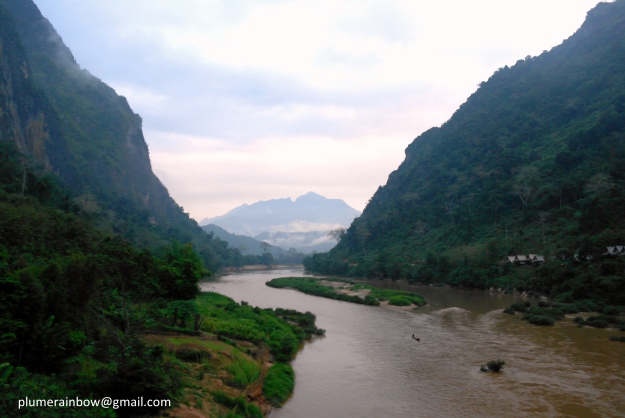
It’s as if life had come to a stand still.
But still anything can happen: suddenly in the middle of the night, while my new found roommate & I were fast asleep, our guesthouse was invaded by a boisterous group of Laotian travellers. Cigarette-puffing, loud and opening our door in some drunken stupour. The next morning, the guesthouse proprietor was really apologetic about it.
At day break, we took a boat southwards on the Ou river, and landed at Ban Don Khoun, a small village. Walked through some farms, paddy fields and wild bamboo into the hills for a trek up the waterfalls. It is quite fun to splash around water and getting very wet. Simple joys really. A dog from the village protectively followed us the whole 3-4 hours. Near the top of the waterfalls, we had an early lunch consisting of a banana leaf wrapped bocadillo style sandwich, while our guide had the typical Laotian sticky rice with chilli paste. Up here amongst the trees, accompanied by the sound of splashing waterfalls.
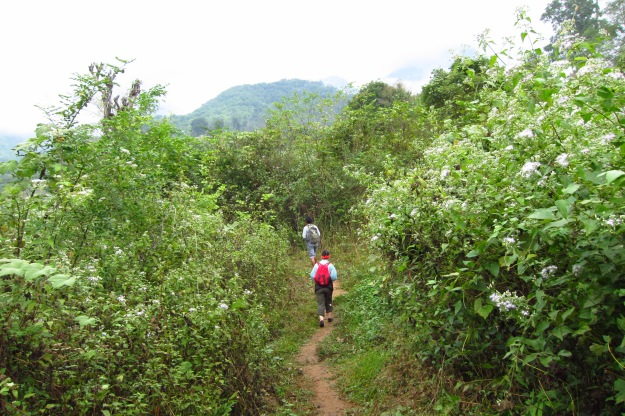
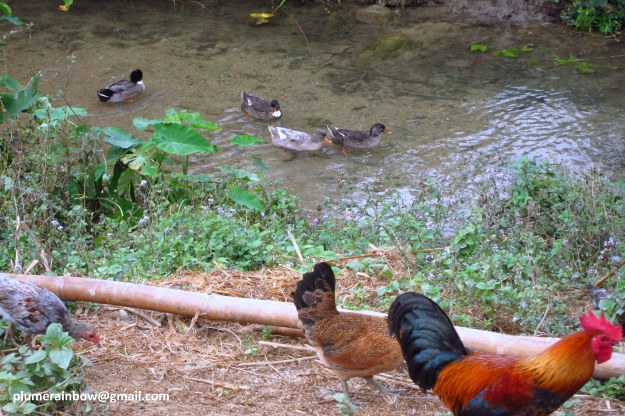
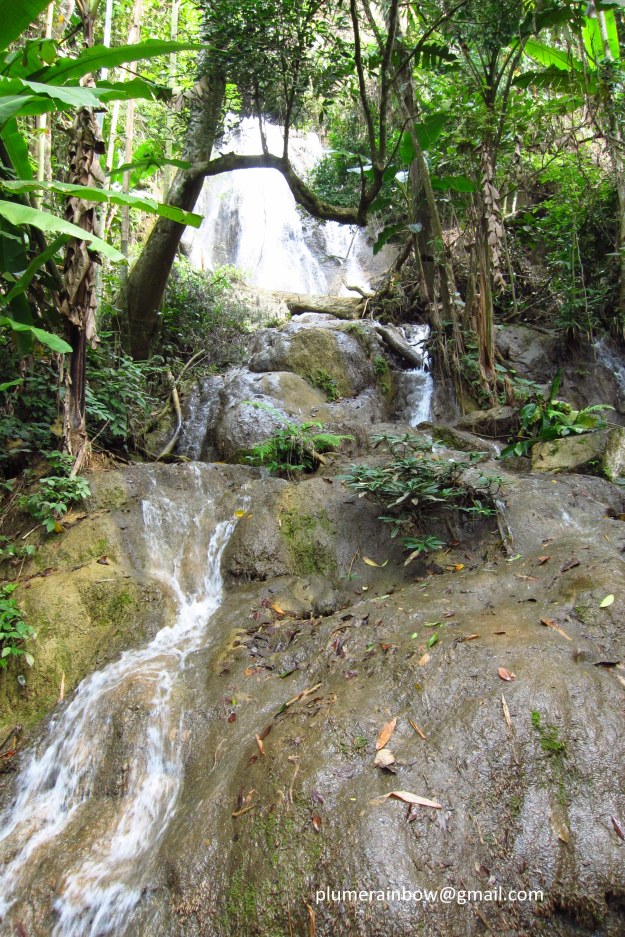
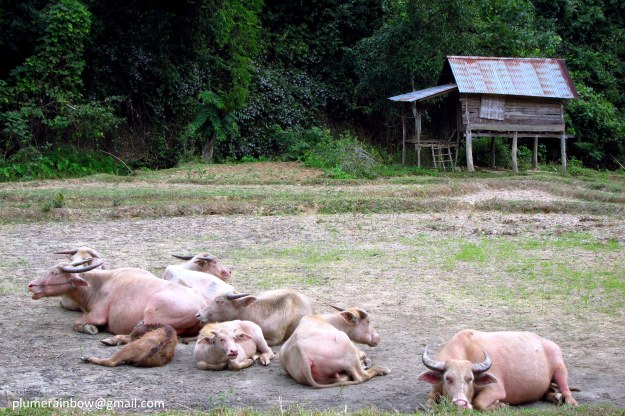
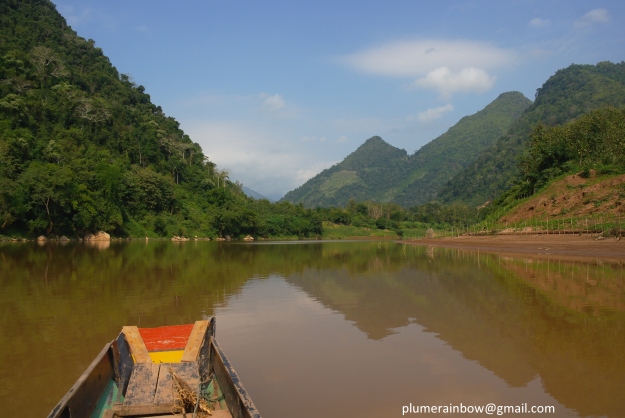
Want some quiet time to think, read, write, draw or day dream? This is the ideal place.
Luang Prabang
The old part of Luang Prabang is quaint, charming and so … full of visitors and its attending amenities. Every old building a restaurant, hotel, cafe or shop, interpersed with temples steeped in history. Still, it’s a lovely place to spend a day, walking around the old part of the city and strolling into temples shaded under gorgeous trees, topped by a walk up to Phousi hill to catch a panoramic view of the tree canopied city. That is, if you can call it a city.
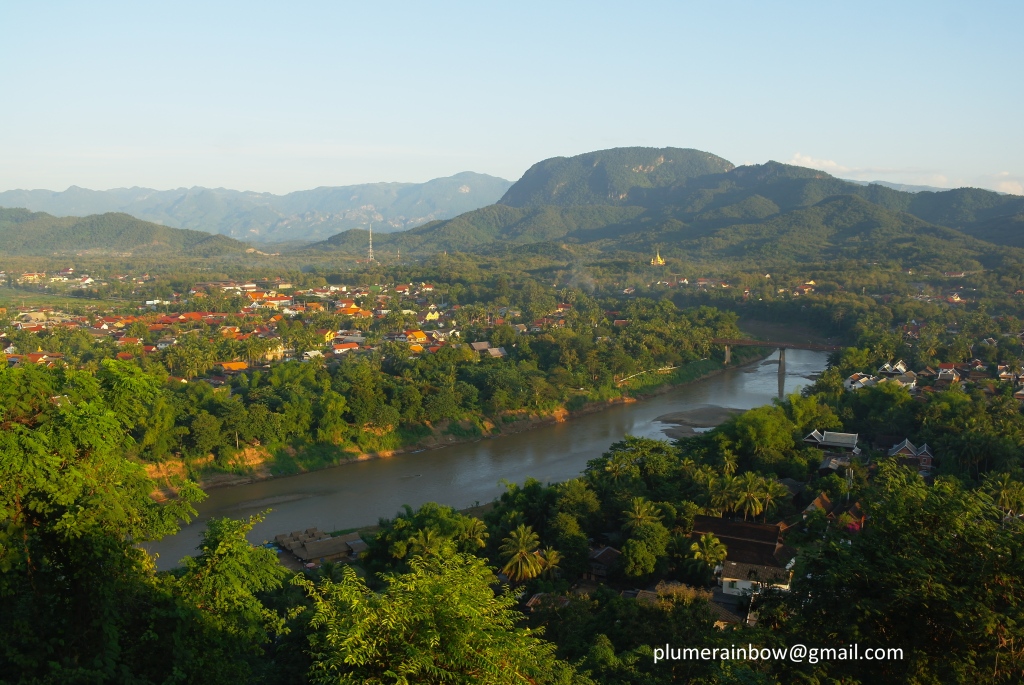
Luang Prabang sits at the intersection of the rivers Khan and Mekong. The river Khan is seen in this photo taken from atop Phousi hill.
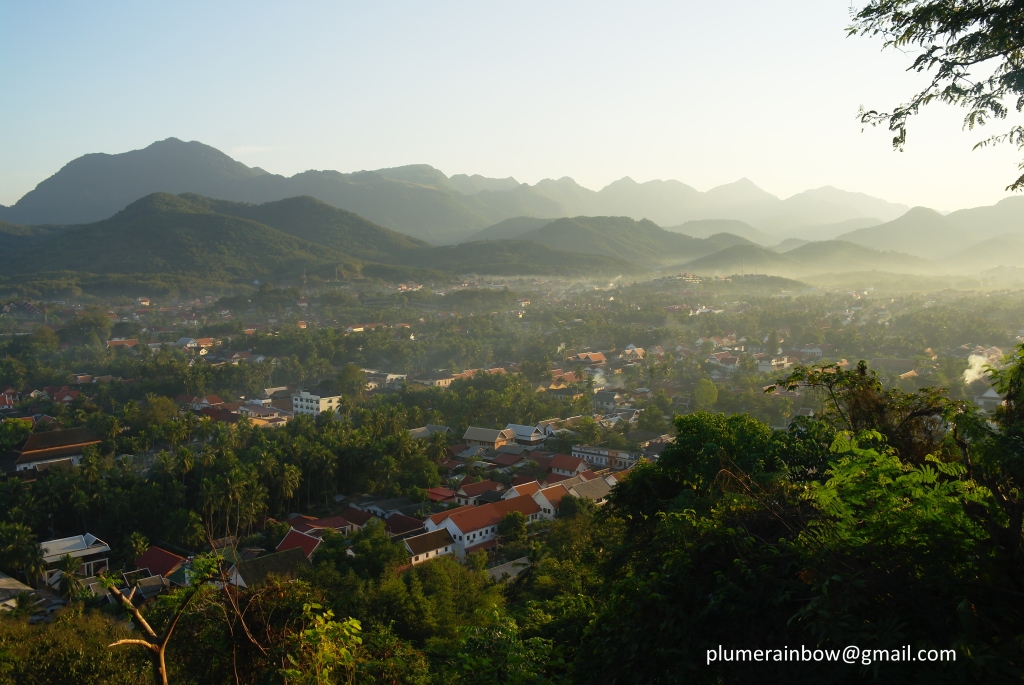
The evening mist lace across the undulating hills in the distance.
From older photographs seen at the Palace museum, there seemed to be more trees in Luang Prabang. But the old city still feels luxuriantly green as one walks along the river with gentle waves lapping against the shore.
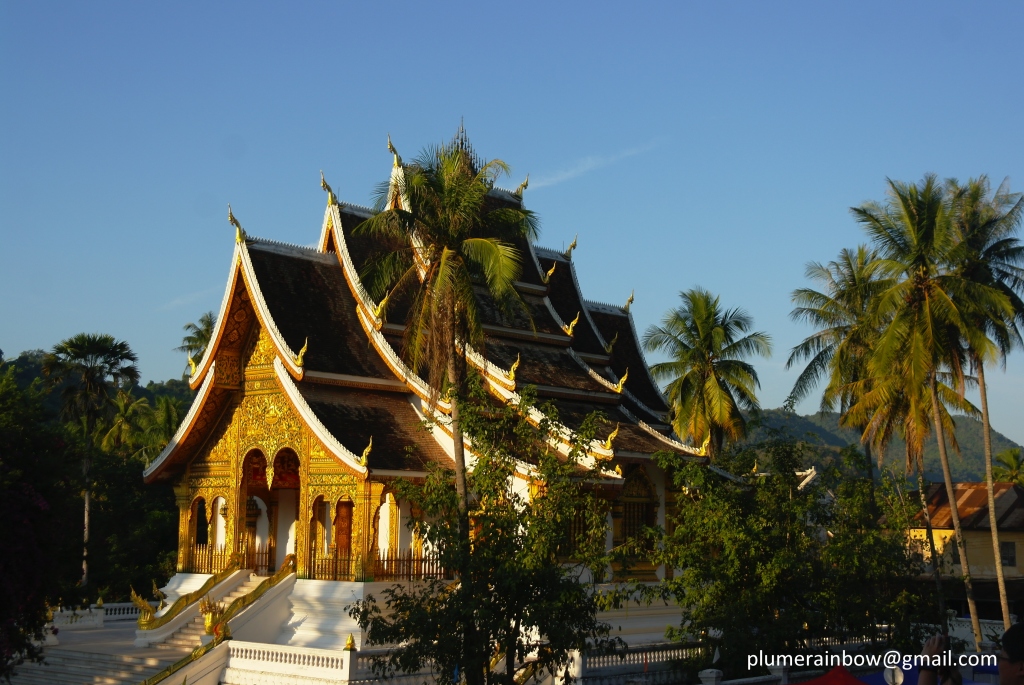
King’s reception ‘room’, at the Palace in Luang Prabang.
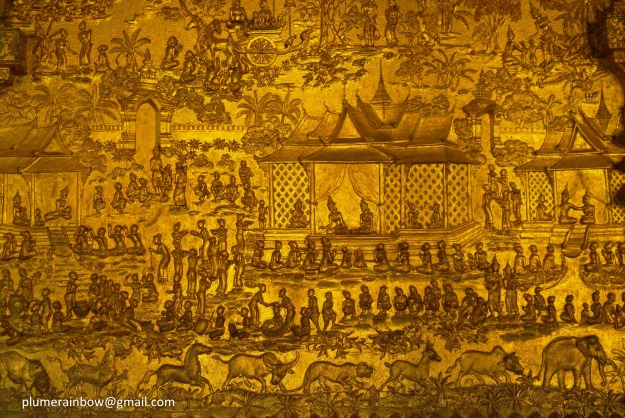
Art work on resplendent gold relief wall at Wat Mai, Luang Prabang
Nearby popular sights include Pak Ou caves and Khoungsi waterfalls. The boat ride to Pak Ou caves reminded me of a skinny long tail boat ride along Kok river in northern Thailand years ago. Not so much the boat itself, but the calming sense of cruising on teh-tarik coloured waters flanked by lush greenery, with the sun pouring on my skin. The cave houses many buddha statues, placed there by devotees.
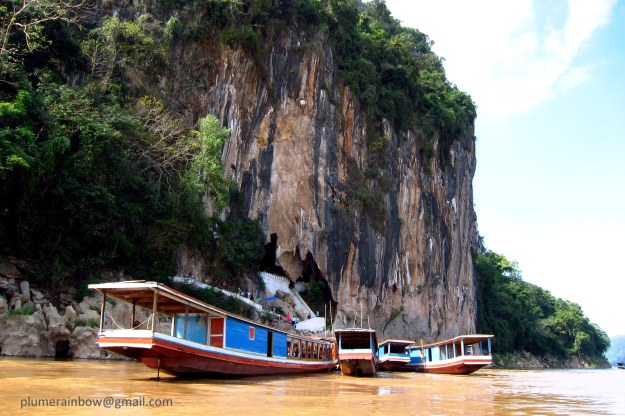
Pak Ou Caves
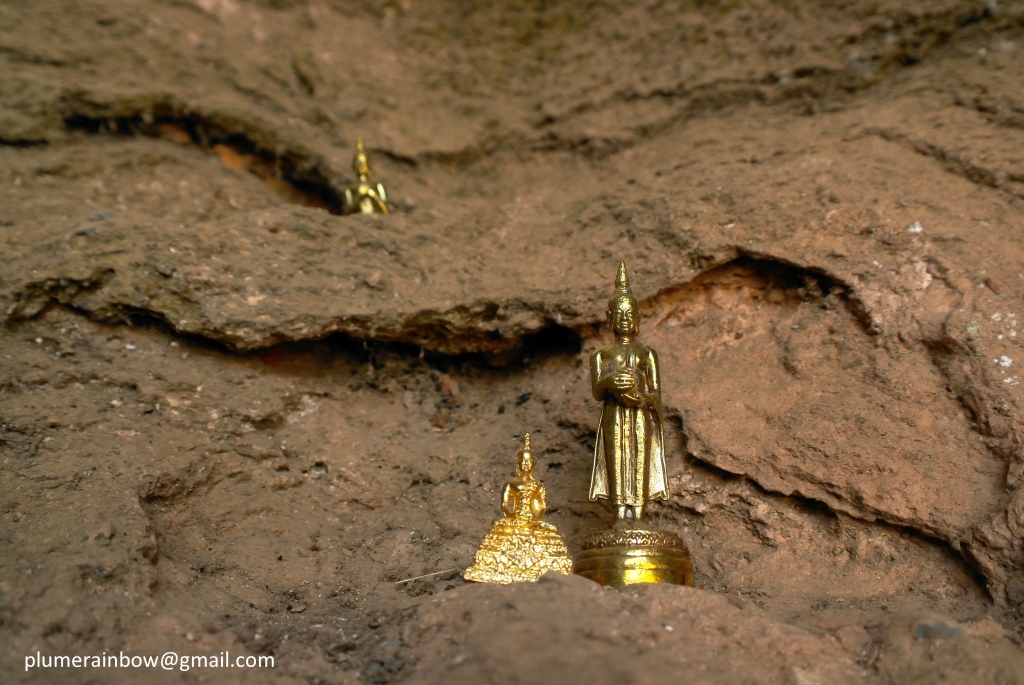
One of the thousands of buddha statues placed by devotees in Pak Ou Caves.
At Khoungsi waterfalls, the clear blue natural swimming pools were really a pleasant surprise. Went for a cool and refreshing dip.
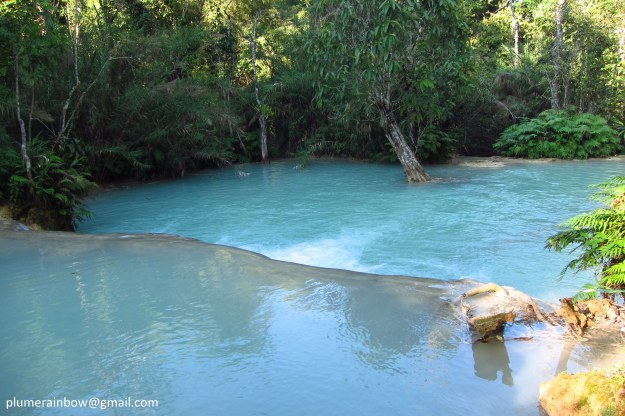
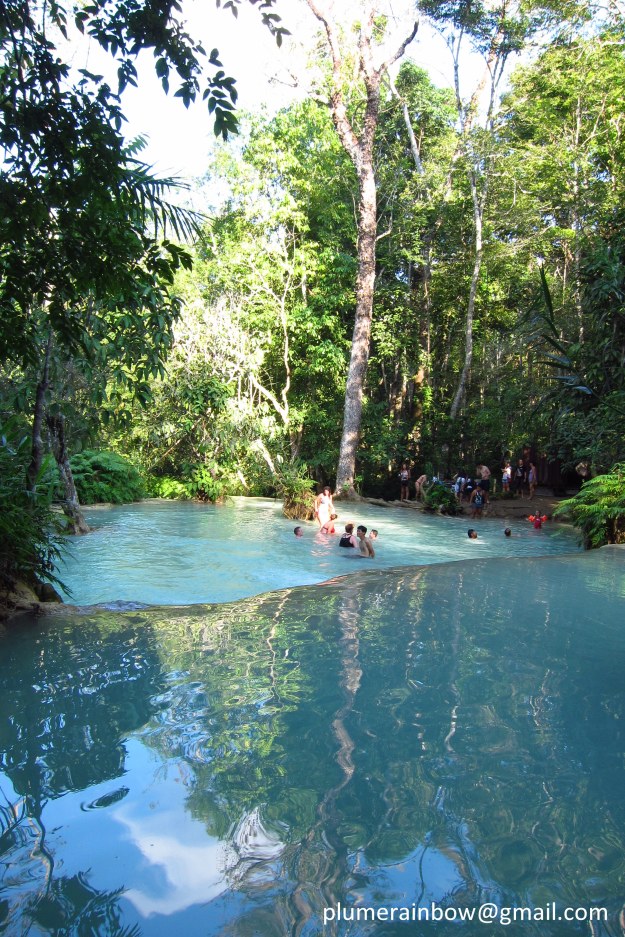
Luang Prabang is also a convenient place to catch transport to other places and I wanted to see more of Laos. Decided to take a day off from Luang Prabang and left jy on her own (little did I know that she fell sick later on). More in the next post.
Xieng Khouang province and the Plain of Jars
The pastoral plains and rolling hills belie the blood-stained history in this region. Flying into Xieng Khouang, the aerial view of the pock-marked landscape is a stark reminder of a war ravaged history.
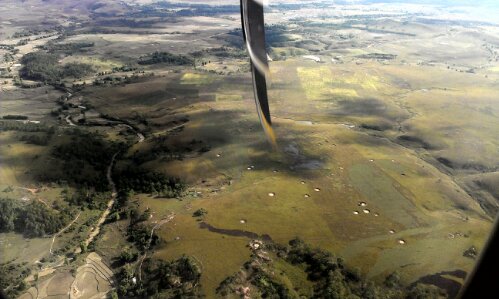
Xieng Khouang’s capital Phonsavan was newly created after the Indochine wars. Nearby lie the enigmatic jars: large urn-like stone jars made from nearby mountains scattered across the plains, or nestled on top of shaded hills. Nobody quite knows what it was for, although nearby excavation of cremated ashes suggest it is a funeral/burial site.
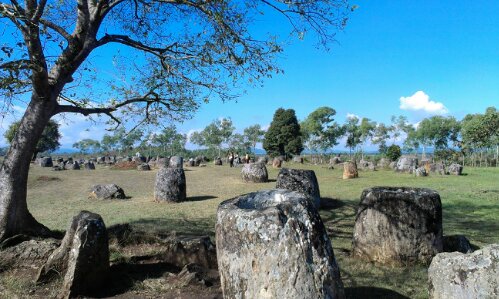
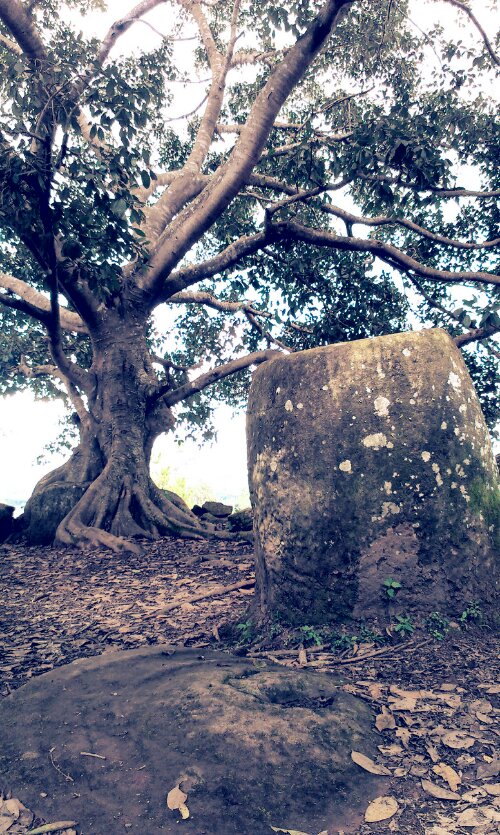
A walk from jar site 2 to jar site 3 takes us through pine tree lined hill tops, rice fields, waves of green gentle slopes set below puffy white clouds. Some small cemeteries in the form of stupas litter the slopes.
So pastoral and yet there is this feeling of not being able to fully indulge in its natural beauty: along the way, we passed by a war plane crash site, a few bomb craters and stray bullets. This idyllic countryside was once rained upon with torrents of bombs.
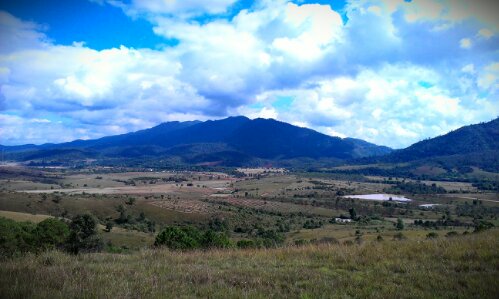
The next day, we were to have a close encounter with a live cluster bomb, one of the many unexploded ordnances (UXO) that continues to endanger the lives of villagers and hinders cultivation on the fertile lands of Laos. More of that in another post.
Cloudy with a chance of French
In Vientiane, cars don’t seem to go very fast. The Patoxai stands still and steady, unfazed by visitors. In That Luang, the country’s most significant stupa, workers are cleaning up the aftermath of yesterday’s big festival. The Mekong river bed reveals itself between broad embankments. It’s supposed to be dry season now even though showers of rain greeted us when we arrived. Our day of overcast skies didn’t last for long though: we visited Wats basking in the glory of the afternoon sun. The pleasant afternoon in Vientiane was topped by a large glass of fruit shake. And then some comforting French styled cuisine. All here, in what is probably the most laidback capital in the world.
